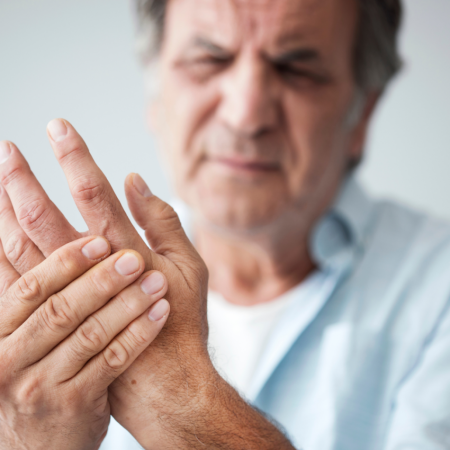
Chronic pain is more common than you might imagine. Everyone experiences pain from time to time; Pain alerts us to potential health concerns and injuries. Chronic pain occurs when it lasts longer than 12 weeks. The National Center for Health Statistics approximates that 76.2 million Americans (1 in 4 people) regularly experience pain that lasts longer than 24 hours, and millions more have acute pain. It is the most common cause of Long-Term disability in the United States.
Symptoms of Chronic Pain
Chronic pain can appear anywhere in your body. It may affect your joints or muscles, or present as chronic headaches. Pain can affect your sleep, causing chronic fatigue. Whether it is from the constant pain or lack of sleep, the unrelenting symptoms can lead to depression, anxiety, and irritability, which can interfere with your daily life.
Causes of Chronic Pain
As we get older, many seniors experience joint pain, most likely brought on by arthritis. As we become less active, pain can be triggered by a sedentary lifestyle. Other causes of chronic pain include past or current injury, an underlying medical condition or an undiagnosed illness, and even some medications. If you notice pain that continues without explanation, you should seek medical advice.
Diagnosing Chronic Pain
Pain is a personal occurrence and is highly subjective. There are no medical tests to determine the level of pain, and doctors must rely on their patient’s descriptions to diagnose and treat. I would recommend keeping a journal detailing your activity (or lack of) and how it affects your pain level. Rate your pain on a scale of 1 to 10 and use descriptive words to describe your pain. Track the day and time that your Pain occurs. Include any environmental factors when describing your pain, including your diet, the weather, and your general activity level. It will help your physician identify and treat your pain appropriately.
Treating Chronic Pain
There are many options in treating chronic pain. Physical exercise, stress management, and relaxation techniques are positive first steps and are a good form of self-care. A doctor may also prescribe physical therapy or recommend massage therapy. Mindfulness exercises to reduce stress can be helpful. If pain persists or is severe, your doctor may prescribe medications, recommend a chiropractor, or eventually suggest surgery, depending on the root cause of the pain. The main goal of treatment is to reduce discomfort and successfully manage your daily life/activities. While some pain cannot be eliminated, there are many treatment options to make your pain tolerable, and by taking the steps outlined above, you can advocate for your help and comfort by identifying and proactively managing your pain.
Keep a Positive Attitude
A positive attitude can significantly boost your mood and improve your day. While not all pain can (nor should) be ignored, distractions can often provide relief of chronic symptoms. By engaging in activities you enjoy, you will not only assist with pain management but will add to the overall quality of your life and happiness.

